Educational solutions LEGO Education. Who can grow your children
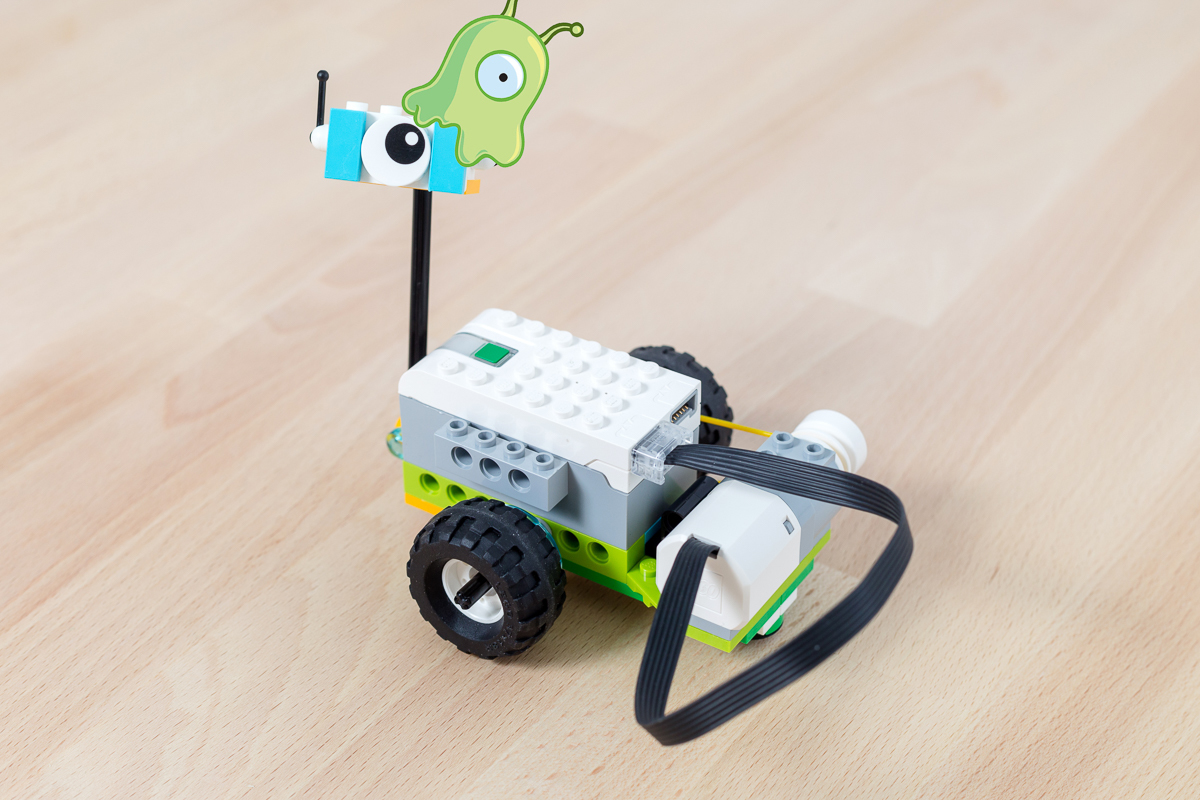
The introduction of developing various skills programs for schoolchildren is happening in all countries of the world. In the depths of individual Ministries of Education, they are increasingly thinking about how to educate students who are able to live in the modern technological world, to develop their universal knowledge and skills that will be in demand in the rapidly changing XXI century. A significant contribution to the popularization of this topic is being made by large companies - Microsoft, Intel, Google, IBM, LEGO Group and others - developing educational programs for schools and "circles" of young technicians. Advanced teachers and university professors learn from their courses and include relevant developments in their classes. However, prior to the inclusion of state structures, all these activities are carried out unevenly and spontaneously.
The process becomes more structured after coordination with the state education system, the emergence of specialized courses for teachers, the introduction of classes in schools, starting with the lower grades. In this way, for example, Lego Education goes - its concept of integrated learning in robotics and programming is being introduced in educational institutions all over the world, including Russia.
Company's mission
The mission of the LEGO Group is to inspire and develop the "builders" of tomorrow. LEGO Education sees its mission in a slightly different form: we create and implement educational solutions that will help students succeed not only in learning, but also in their future life. On the other hand, we understand that it is the responsibility of the teacher to teach certain knowledge with concrete concrete measurable results, and solutions from LEGO Education, of course, take these requirements into account.
')
Interesting Facts
- The name LEGO consists of two letters of the Danish words “LEG” and “GODT”, which means “to play with passion”.
- The LEGO Group patented the LEGO brick with all the known tubes inside and fixtures on the top edge on January 28, 1958. Since then, all LEGO System bricks (classic LEGO bricks) have been made with the dimensions that have been indicated in this patent.
- LEGO DUPLO bricks are eight times larger than ordinary LEGO bricks, that is exactly twice in each direction. However, they can still connect.
- On average, every person on earth has 86 LEGO bricks!
- In 2012, 45.7 billion LEGO bricks were produced at a speed of 5.2 million parts per hour.
- The LEGO Group is one of the world's largest manufacturers of tires, albeit toy ones.
- If you add up all the LEGO bricks sold next to them in 2012, their length is enough to wrap the Earth more than 18 times.
- To reach the moon, you will need to build a column of 40 billion LEGO bricks.
- The first minifigure was produced in 1978. Since then, more than 4 billion LEGO figures have been made, making them the largest group of people on the planet!
- Each minifigure without a headdress is equal in height to four standard LEGO bricks.
- The first version of LEGO MINDSTORMS Education was released in 1998 and was the result of a collaboration between the LEGO Group and MIT (Massachusetts Institute of Technology), USA. The second and third generations were released in 2006 and 2013.
WeDo 2.0
The WeDo 2.0 kits from LEGO Education allow children of primary school age not only to study subjects from the school curriculum, but also little by little to determine what will be interesting in the future for them.
Let's dwell in more detail on the kits themselves and their capabilities.
Container
The WeDo 2.0 sets are delivered in a plastic container, in which it is convenient to store both the parts of the set, and the robots and models already assembled from it, since sizes allow it. The container is durable, which protects it from frequent use, and from regular drops. For storing small parts, you can use the upper compartment.

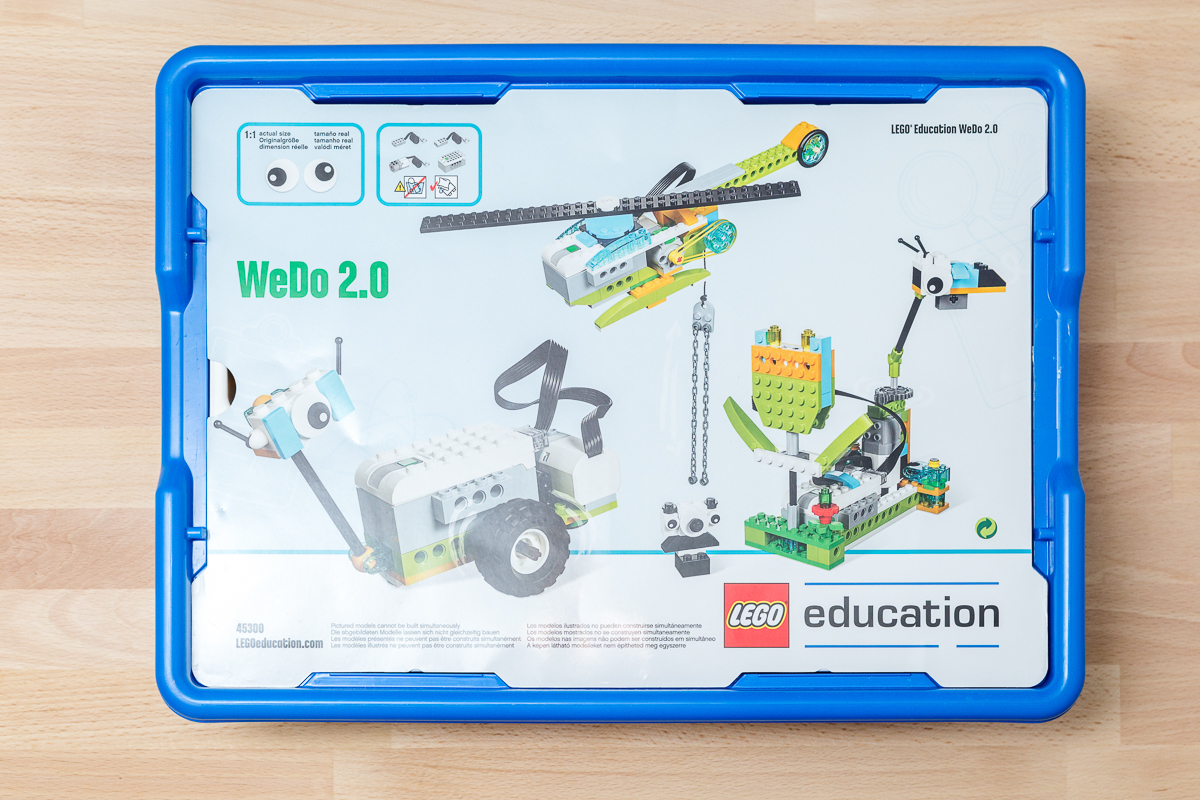
It is assumed that the child will be able to assemble a programmable all-terrain vehicle from the basic set, so it was not without wheels.
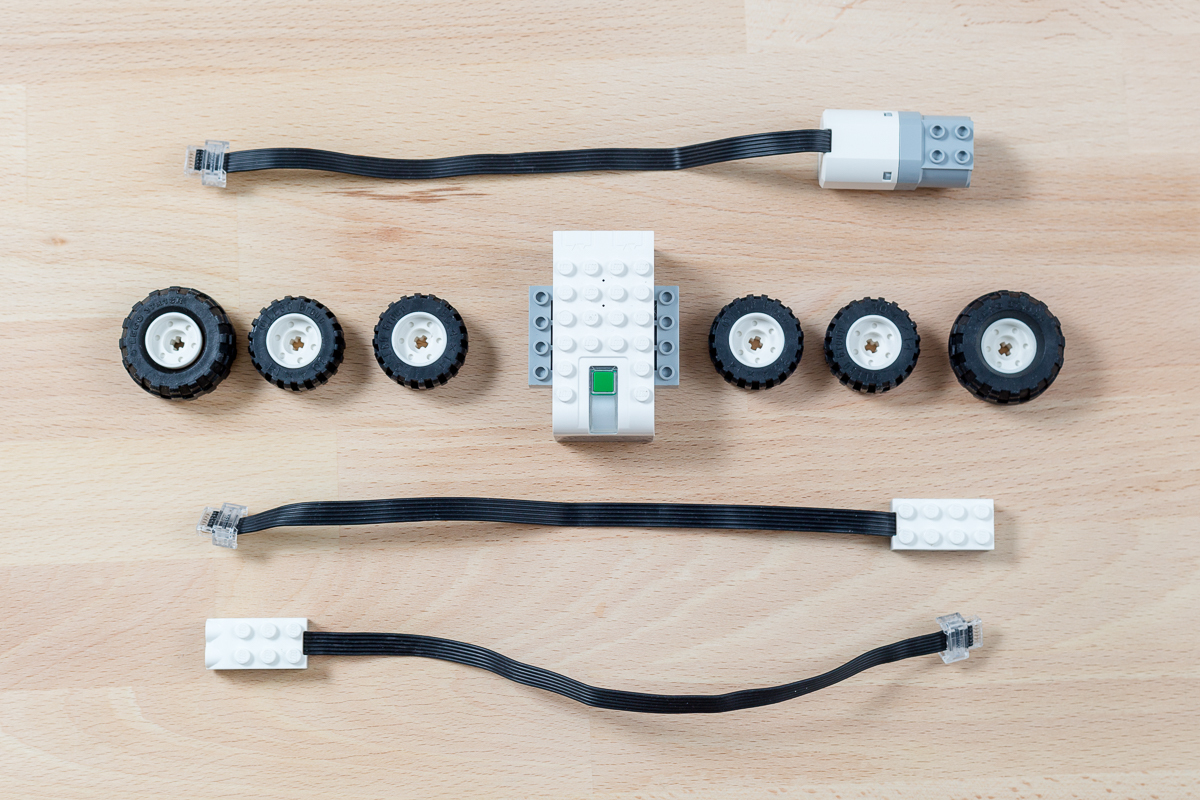
The kit itself contains:
- a number of parts (280 pieces) for assembling robots and mechanisms of the desired design, which is limited only by the imagination of the child (or the parent helping him);
- “Brains” of the set - a special control unit sensors and motor, SmartHub WeDo 2.0;
- in fact, sensors (movement and distance, gyroscope) and a small motor;
- cables for connecting sensors and motors with a control unit.

Let's start with the main thing. From the brain of this set.
SmartHub

He is the WeDo 2.0 SmartHub. All thoughts, desires, secrets and possibilities of the future robot are enclosed in this simple brick. Of the available controls, only the green button turns on Bluetooth pairing mode. The control unit does not have any display, unlike the elder brother, LEGO MINDSTORMS Education EV3, therefore it can only be programmed using a tablet or computer with installed software (iOS, Android, Windows 7, Windows 8.1, Windows 10, OS X) . Inputs that can be seen in the photo - to connect sensors and motor.
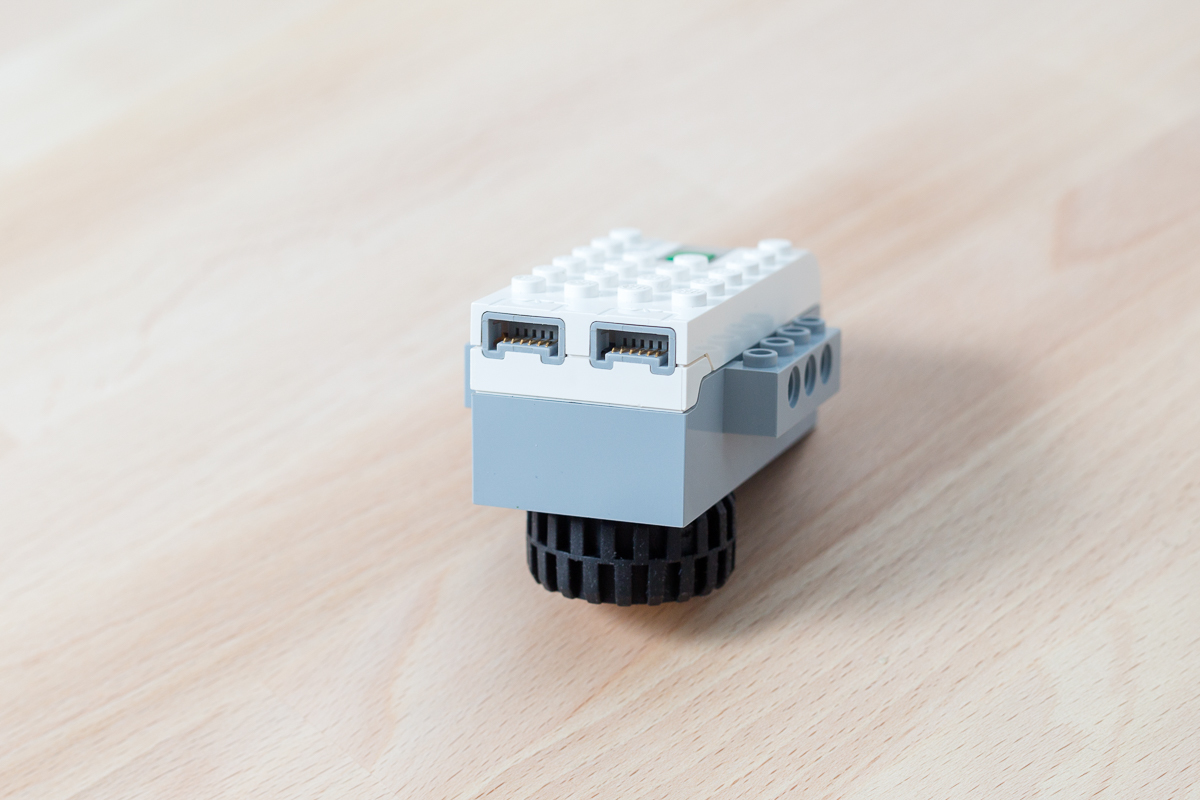
The SmartHub also connects to the PC via Bluetooth Low Energy (BT 4.0 and above). It is powered by two ordinary finger-type batteries (AA) or a special battery (sold separately).
After the pairing mode is turned on, you will have 10 seconds for your tablet or PC to detect the control unit and connect with it successfully.
The software itself is very friendly and, in fact, is a flowchart designer. Immediately from the main page of the application, you can view a clear cartoon that tells about the capabilities of the software itself, its interface, and describes in detail the process of creating algorithms. All the necessary reference information for the teacher is taken out on a separate button, and the project manager takes half of the screen, allowing you to view current or create a new one.
To start creating, you need to create a new project. After that, the programming window will open. Here it is - the first step on the path of the young programmer! To create a program that controls the robot, you need to create the correct sequence of flowcharts, the program. Each element of the flowchart is indicated by the icon of the corresponding action, so even the child will quickly understand the order in which the blocks should be located in order to achieve the necessary activities from their robot.
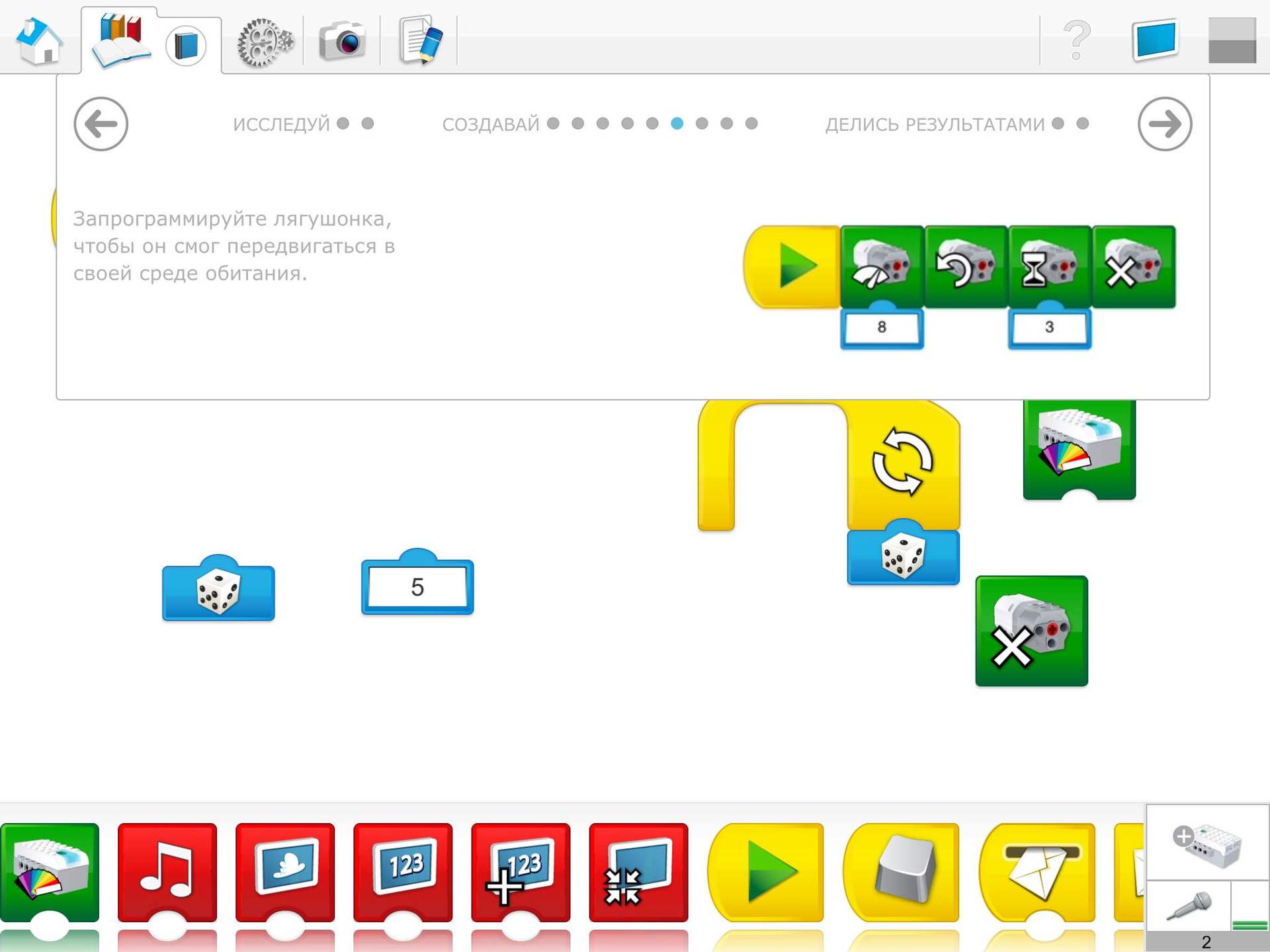
It is possible that the child will be enticed by the robot programming process itself, the analysis of algorithms and the study of flowcharts, thanks to which the robot performs certain actions, as well as the creation of its own algorithms and programs. Most likely, having matured, the child will take the path of programming, and the world will see another excellent coder who has been interested in this area from the earliest years.
Maybe for the child the process of collecting the robot from parts will be much more interesting, and he will choose this path - designing, creating new materials that meet the needs of the new time. By the way, the importance of programming and collecting structures in a team is also important - children will be able to distribute roles and responsibilities, after which they will start working on their part of the task to achieve a common goal, increasing their expertise in a particular area. Note that the set of WeDo 2.0 is recommended for the work of two children.
Sensors and motors
Gyro (tilt sensor). Allows you to track the position in space, being securely mounted on the structure. Also thanks to him, you can program the behavior of the form “When turning 45 degrees to the left, turn off the motors and stop moving” or “One minute after touching the sensor, start moving”. Such teams will especially appreciate the owners of cats.
Motion Sensor. It can capture the movement of objects in a radius of approximately 15 centimeters and determine the distance to such objects.
Medium WeDo 2.0 motor. Actually, without this element, a robot or a machine would have problems in terms of any movement.

The sensors and the motor have seats on the case for standard parts, so fixing them to each other or the assembled structure is quite simple. They are connected to the SmartHub with the supplied cables.
Please note - the SmartHub has only two inputs, so you can use either 1 sensor and 1 motor at the same time, or two sensors (and admire the ominously frozen robot).
Since SmartHub doesn’t have a screen, you’ll need a PC or tablet for programming the robot itself. Versions of the WeDo 2.0 program for iOS and Android smartphones exist in the markets, but the manufacturer has reasonably set the screen size limit. For example, the application refuses to be placed on the Samsung Galaxy S7 or iPhone 5S, but it is successfully installed on the iPad mini 2. When you launch the application, you understand - why. For if on the tablet it is still possible to draw up a flowchart with actions for the robot, then on the phone it will be much more difficult.
The software is very simple and intuitive, each element of the flowchart containing the specific action of the robot (move, stand, wait for conditions, wait for readings from the sensor, etc.) is marked by a very obvious icon. The program itself in visual terms is a chain of elements of flowcharts.
After pairing the tablet with SmartHub, you can quickly load the created program into the robot's memory and start its execution.
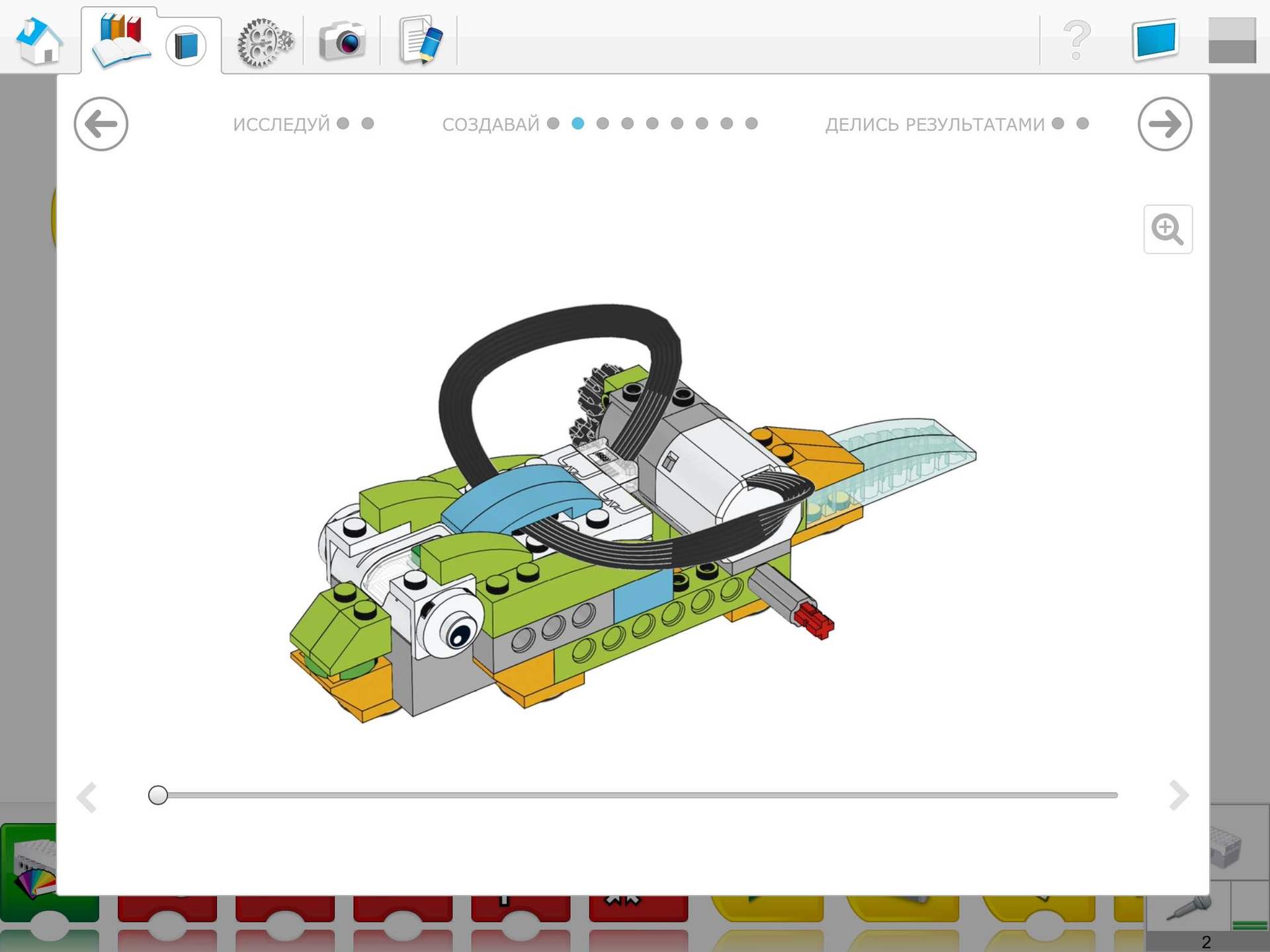
If we are talking about primary school, then a more serious educational element is required, and the elder brother of WeDo 2.0 comes in - LEGO MINDSTORMS Education EV3 .
Like WeDo 2.0, it comes in a spacious, robust plastic container.

Let's start again with the brain.
Microcomputer LEGO MINDSTORMS Education EV3
As you can see, it looks much more serious than SmarHub WeDo.
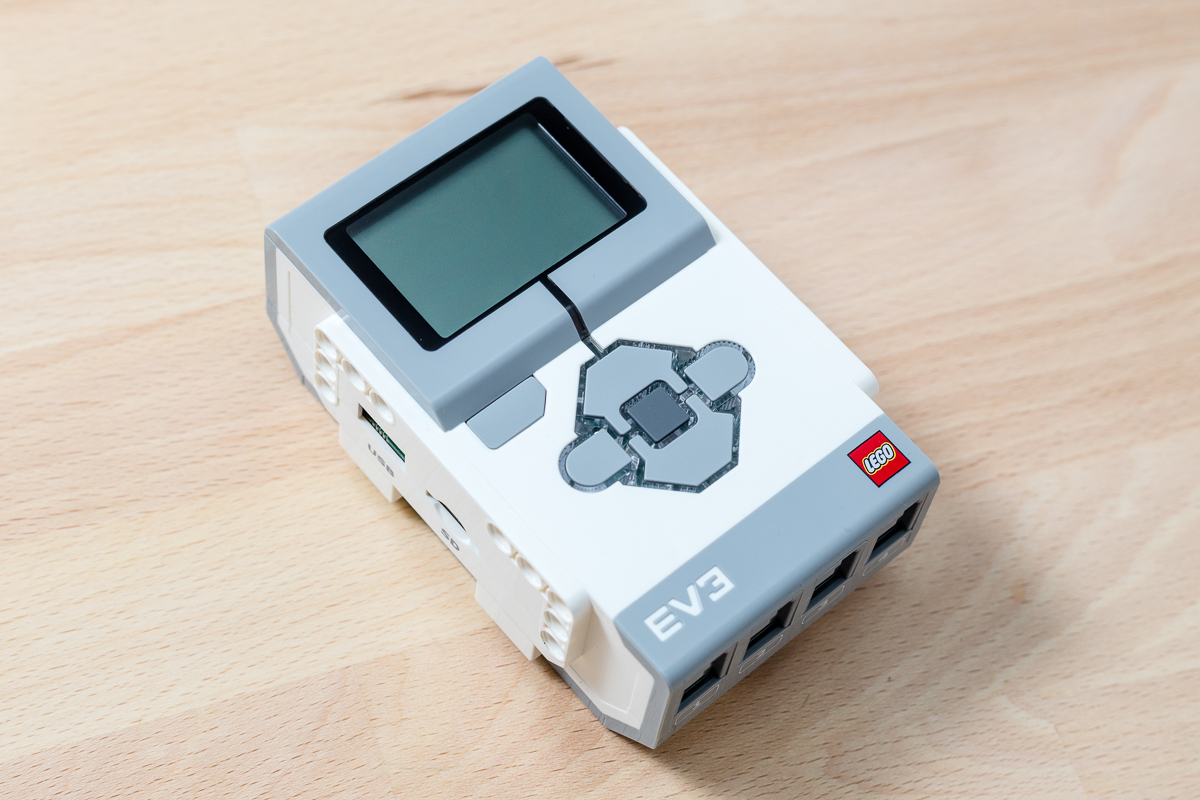
There is a screen that allows you not only to display various images if desired (or when a robot executes certain commands), but also to program it without connecting to a PC or mobile devices. That is just using six physical buttons - navigation through the menu is quite intuitive, programming is performed by creating a chain of flowcharts, each of which can be composed and stored in the device's memory.
The screen is black and white, without backlight.
The microcomputer itself determines the type of sensor or motor when connected, can reproduce sounds (there is a built-in speaker), images and has two built-in LEDs with the ability to control (and they also display the current battery status).
Speaking of nutrition.
To work, you will need either 6 finger-type batteries (AA), or a special 2200mAh battery that comes with it.

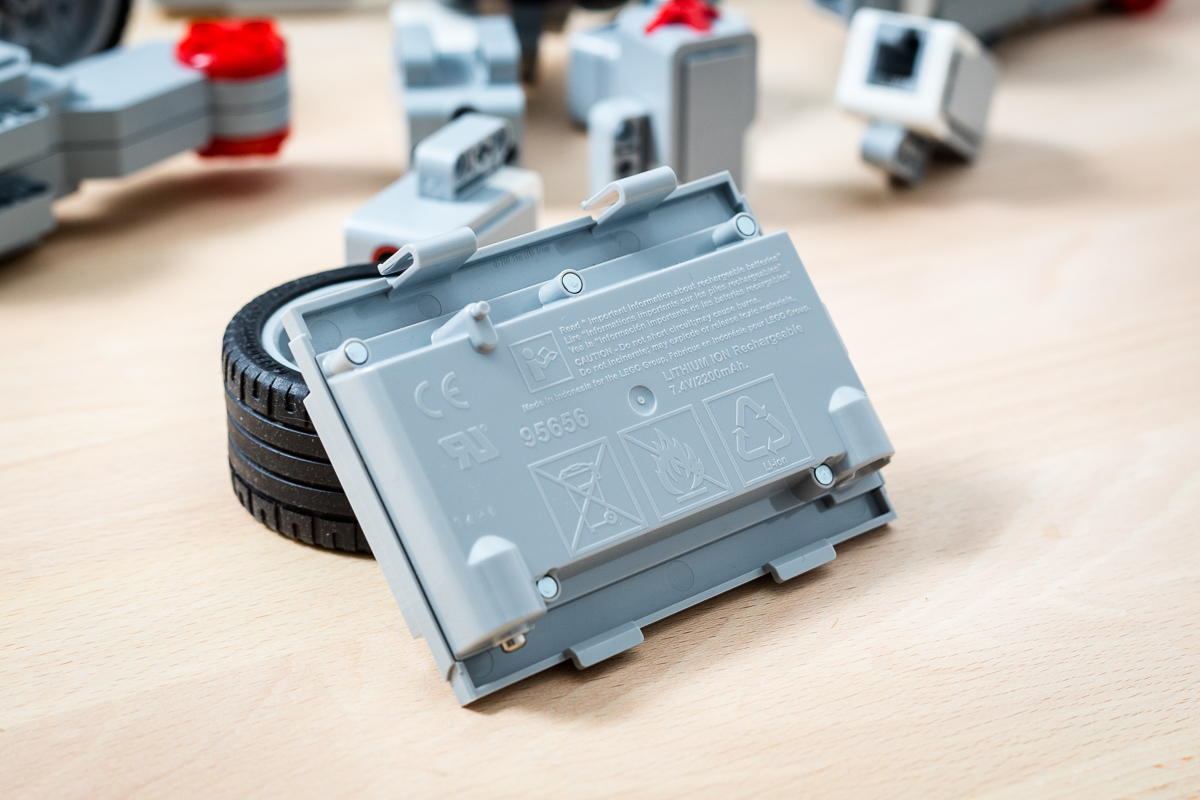
The microcomputer can be connected to the PC either by cable (miniUSB - USB), or via WiFi or Bluetooth, here it is more convenient for someone.

DCBA (in fact, A B C D) in the photo are the inputs for the motors, of which there are 3. There are so many connectors, because these motors can be connected in different ways, and a situation may arise when the design of your robot allows you to connect the wheel motors to B and C, but you can only connect the servomotor to A, because D is blocked by some detail, for example.

1-2-3-4 - respectively, inputs for connecting sensors (5 pieces in the set). As the attentive reader will notice, connecting all the sensors from the set to the microcomputer at once will not work, it is difficult to argue with mathematics.

USB connector and microSD connector (you can record many training programs on a card and run them from different microcomputers through the built-in file manager, it looks as simple as finding a music track in the folder and launching it). You can also write real-time telemetry to the map from all available sensors - you’ll get a sort of Big Data collected during, for example, an experiment in the fields.
The microcomputer is turned on by pressing the middle key, turned off by the “Back” button or according to the timeout set in the settings.
Motors and sensors

Large servos. Included - two pieces. Ideal for spinning wheels, but again, the limiter of use is just fantasy. Well, still common sense and resistance of materials. The microcomputer can remove from them telemetry of turns with an accuracy of 1 degree thanks to the built-in rotation sensor.

Medium servomotor. Includes one. It differs from large ones only in appearance, size and quantity in the set.
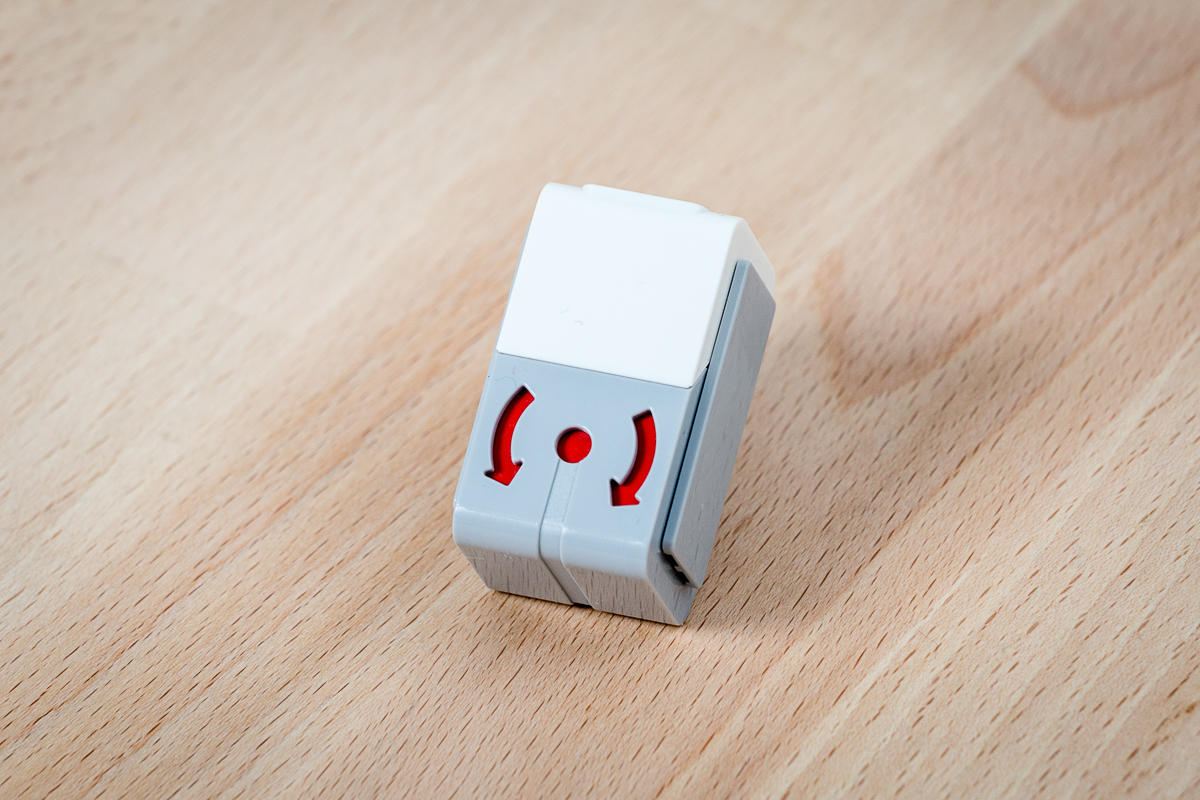
Gyroscopic sensor. Measures and transfers to the microcomputer the rotation speed in degrees. It works only in one physical plane (optional).

Touch sensors (in a set of two pieces). It can fix three different states: no pressing, presence of pressing, clicking (full pressing to the end and release of pressing). Able to count the number of clicks. Helps determine the presence of an obstacle by physical contact with it.

Ultrasonic sensor. Although it looks like eyes, but in fact it is the sonar of the robot (actually, and replacing his eyes). Measured distance to objects and the very presence of objects in the path of the robot. It helps a fast-moving robot to notice the obstacle and stop at a given distance from it. Or drive around it.

Color sensor Using LEDs, it is possible to recognize objects of a certain color, which makes it possible to program the robot, for example, as follows: “Drive forward on the green surface, turn right when entering the yellow zone, slow down in the red sector, stop if the light goes out in the room” . The sensor also distinguishes between light levels, reflected and diffused light.
The instruction to the set is attached in the best traditions of LEGO - everything is simple and clear, if there are suspicions that the user will find it difficult to find a specific detail - it will be duplicated in the full-size picture, it is enough to attach it and compare - whether you were looking. Of course, the paper manual suggests an assembly scheme for one particular model (which allows you to quickly understand all the dialing capabilities, learn the principles of operation of the sensors and the application). Plus, additional instructions and lessons are in the software.
But since this is a LEGO MINDSTORMS, the total number of possible models is limited only by the imagination of the child.
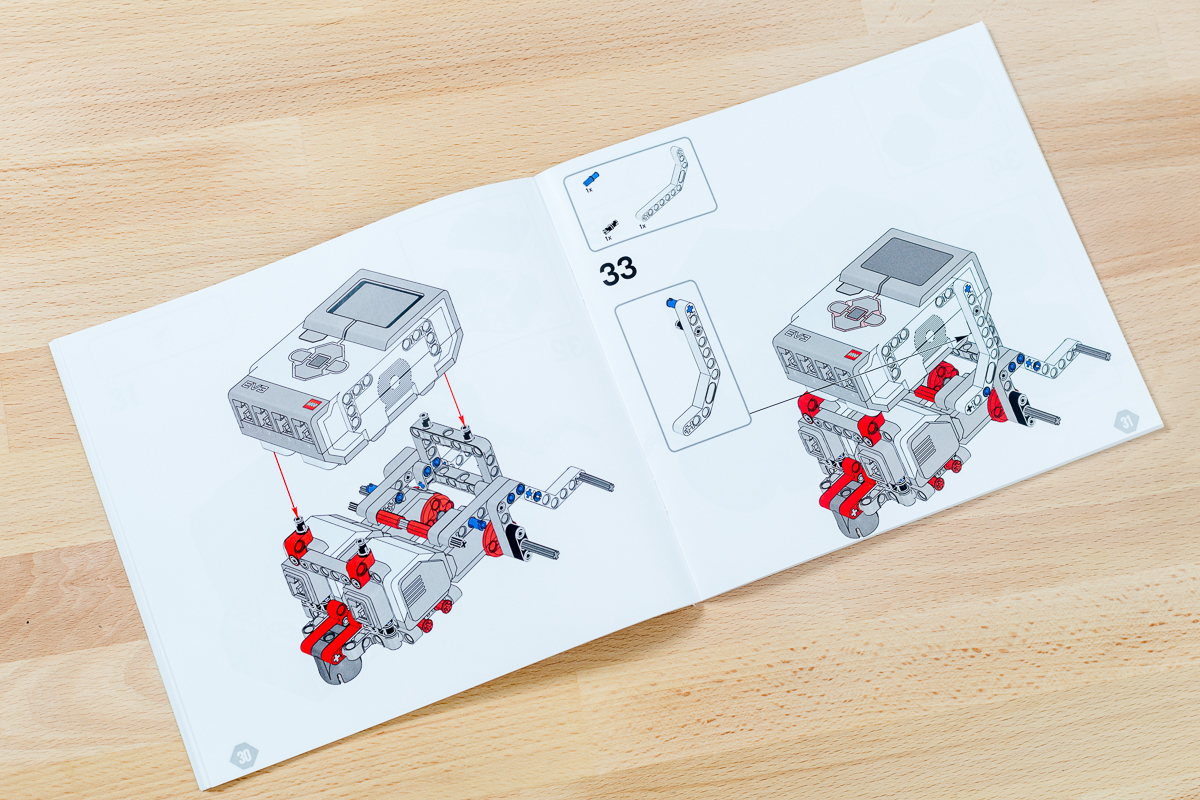
The manual also describes the flowcharts for those or other actions that can be made directly from the microcomputer.
As you can see, there is nothing supercomplex in assembling the robot's structure or in its management, the students do it pretty quickly.
By the way, one should not assume that the sets of such roboconstructors can help only the children with a technical mindset to decide on a profession.
A child who is an absolute humanist will be able to come up with the main thing - the goal of creating this or that robot. Why should the robot go somewhere? Draw or lay down a maze-location for it. Or even come up with a short film script in which robots gathered by friends will interact with each other.
One of the main consequences of using LEGO Education kits in school is the formation of interest in the learning process itself. Each lesson should become for the child not just a time period, after which you can go home, but a time that can be interestingly spent on constructing something new, while studying the subject itself.
Constant interaction with the sets, frequent programming and creation of flowcharts, the presence of a competitive element - all this will develop the child's skills that are necessary to work in the modern world.
School of the future: what and how to teach children
It is no secret for anyone that there is a very high probability of the disappearance of a number of professions familiar to us in connection with the emergence of new ones and the replacement of people by automation. According to the University of Oxford, many professions in which people are employed today will disappear in the next 10–20 years - the implementation of the relevant processes will be fully automated. Drivers, salespeople, factory workers, call center employees, as well as some managers and even journalists should think about changing their profession today. Professions in which technologies will be closely intertwined with the natural sciences will be in demand.
According to Intel, many new professions will somehow be associated with programming and robotics. The problem of a shortage of engineering personnel and attracting talented young people to the study of natural sciences in the company is called one of the most pressing.
Increasingly, ideas are being heard that teaching children to technologies, their use in the process of studying is one of the most important missions of today's educational institutions. Fundamental sciences retain their significance, but the ability to work with information, acquire new skills and find them used to solve new problems is an equally important component in shaping a successful future.
LEGO Education educational kits are designed for children of different ages - from primary school students to students. Starting with simple educational solutions, the child moves on to more and more complex robotic complexes. The first educational robotic platform LEGO Education WeDo 2.0 is suitable for children from seven years old (or even younger) and allows them to better understand many subjects: mathematics, the outside world, design, the basics of programming. In the process of training under the guidance of a teacher, a child learns to analyze tasks and find optimal solutions while working in a team. Immediately laid the skills of creating projects (from idea to implementation) with the conduct of experiments.
All this fits into the concept of STEM learning (S - science, T - technology, E - engineering, M - mathematics). It just assumes the creation of an environment in educational institutions, allowing to test ideas and theories in practice.
At the same time, one should not confuse the development of necessary skills in younger students with early vocational guidance. It is impossible to predict exactly what the child will have to deal with in the future. But you can teach him to learn new things, work in a team, conduct independent projects, orient himself in what is important and what is of secondary importance.
By the way, renowned futurologist Ray Kurzweil and the authoritative doctor in the United States Terry Grossman believe that in the next 10-20 years, we will have a real revolution in medicine. The combination of new technologies and methods of treatment will allow people to increase the period of active life to 100 or even 150 years. Is it possible, is it necessary to devote all these years to one job or one field of knowledge? The man of the future is a man who is constantly learning, changing, adapting. Or replaced by a robot and sent to the dustbin of history.
Source: https://habr.com/ru/post/398795/
All Articles